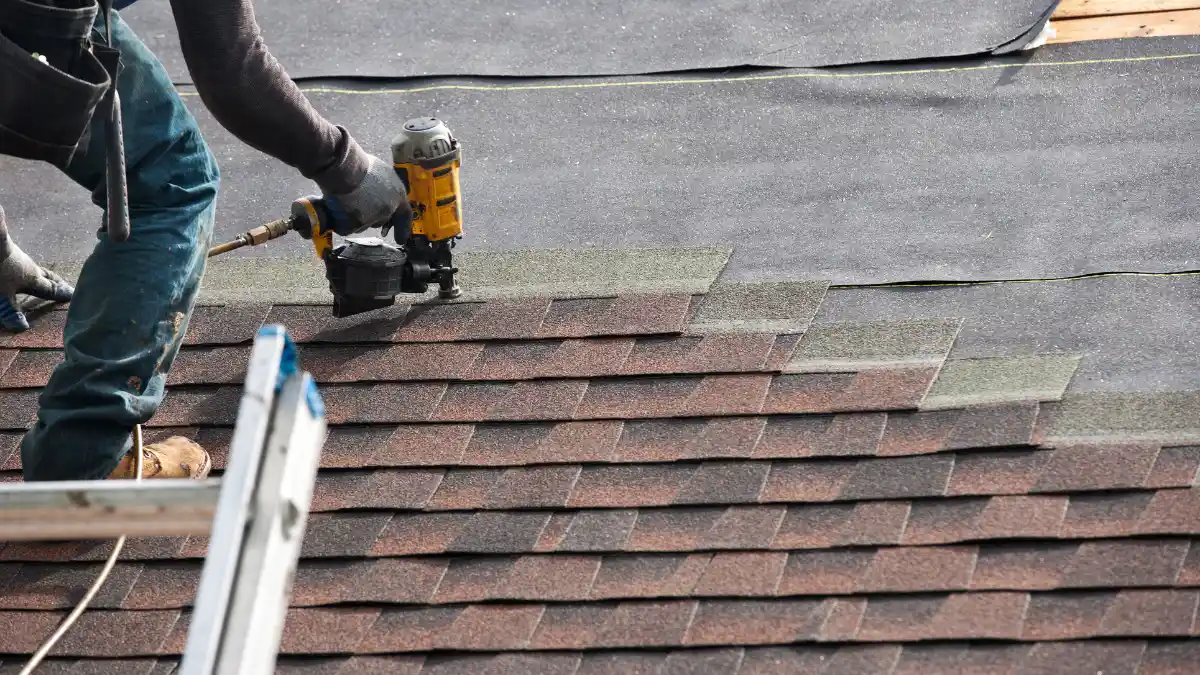When it comes to homeownership in Oregon, the question of how much a new roof costs is a common concern. A new roof represents a significant investment, and understanding the average costs of a new roof in Oregon is crucial for homeowners planning this essential upgrade. Factors such as materials, labor, and local market conditions all play a role in determining the final price tag.
Navigating the world of roof replacement costs in Oregon can be challenging, but it’s a necessary step to ensure your home remains protected. This article will explore the key elements that influence roofing expenses, compare different materials and their benefits, and provide useful tips to budget for your new roof. Whether you’re working with a Portland roofing company or a local roofing contractor, this guide will help you make informed decisions about your roofing project.
Understanding the Average Cost of a New Roof in Oregon
When considering a roof replacement in Oregon, it’s crucial to have a clear understanding of how much does a new roof cost in Oregon and the costs involved. The average cost of a new roof can vary widely, depending on several factors. Let’s break down the typical price range, factors affecting cost, and cost breakdown by material to give you a comprehensive overview.
Typical price range
In Oregon, the average roof cost falls between $9,300 and $27,200. This wide range reflects the various factors that influence the final price tag. For an average-sized Oregon home of about 1,780 square feet, you can expect to pay anywhere from $9,309 to $15,521 for a composition (asphalt) shingle roof. If you opt for designer asphalt shingles, the price range increases to $16,305 – $27,163.
Factors affecting cost
Several elements have an impact on the overall cost of your new roof, and understanding the factors affecting roofing costs is crucial:
- Roof Size: The square footage of your roof is a primary factor in determining the amount of materials needed and the labor required.
- Roof Slope: Steeper roofs require specialized equipment and safety measures, which can increase costs.
- Type of Roof: The material you choose has a significant influence on the price. Composition shingles are typically the most affordable option.
- Time of Year: Late spring through early fall is the busiest season for roofing companies, which may result in higher costs due to increased demand.
- Current Roof Conditions: If your existing roof has underlying damage or requires repairs before installation, this will add to the overall cost.
- Labor Rates: Different roofing contractors have varying hourly rates, which are factored into your estimate.
- Location: The cost of living in your area of Oregon can affect pricing. High-cost-of-living regions may see slightly elevated prices.
Cost breakdown by material
The roofing material you select is one of the most significant factors influencing the final cost. Here’s a breakdown of popular roofing materials and their associated costs in Oregon:
- Asphalt Shingles: The most common and affordable option, costing around $5 per square foot. For a typical Oregon home, you can expect to pay between $6,000 and $10,000.
- Metal Roofing: More expensive than asphalt, metal roofs cost between $8 and $16 per square foot. While pricier upfront, they offer exceptional durability, lasting up to 70 years.
- Tile Roofing: Tile costs between $10 and $15 per square foot. This material can last 25-30 years but requires regular maintenance.
- Composite Roofing: A cost-effective and durable alternative to traditional materials, composite roofing offers a lifespan of 50+ years and excellent weather resistance.
When planning your roof replacement, it’s essential to consider not just the upfront costs but also the long-term value and durability of the materials. Consulting with a local Portland roofing contractor can help you make an informed decision based on your specific needs and budget.
Free Roof Inspections. Fast. Reliable.
Is your roof ready to weather the storm? Dont risk property damage. Our free roof inspections provide expert analysis to identify potential issues before they become costly problems.
Key Factors Influencing Roof Replacement Costs
When planning for a new roof in Oregon, it’s crucial to understand the key factors that have an impact on the overall roof replacement cost. These elements can significantly affect your budget and help you make informed decisions about your roofing project.
Roof size and complexity
The size of your roof plays a major role in determining the cost of replacement. Roofing contractors typically charge by the square foot, so a larger roof will require more materials and labor, driving up the price. For instance, in Oregon, residential roofs can range from 1,000 to 4,000 square feet, with the average size being around 1,700 square feet.
However, it’s not just about size. The complexity of your roof’s design also has an influence on the cost. Steep roofs, multiple angles, and features like dormers, chimneys, or skylights can make the installation process more challenging. These elements require additional time, precision, and sometimes specialized equipment, which can increase labor costs.
Roof pitch and accessibility
The pitch or slope of a roof refers to the angle of the roof and is usually presented as the inches of vertical rise over 12 inches of horizontal run. Roof pitches are generally categorized as flat, conventional, and steep. A flat roof ranges from 0/12 to 2/12, a conventional pitched roof falls between 4/12 and 7/12, and a steep roof is anything over 8/12.
The pitch of your roof significantly impacts labor costs. Steeper roofs require more precautionary measures and specialized equipment, which can increase the complexity and duration of the installation process. This, in turn, raises labor costs. Additionally, the accessibility of your property and roof can affect pricing. If your roof is difficult to access, it may require more time and effort, resulting in higher installation costs. Therefore, when planning your roof replacement project, it’s essential to consider how the pitch and accessibility of your roof will influence overall expenses.
Material choice
The type of roofing material you select has a significant impact on the overall cost of your new roof. In Oregon, where heavy rainfall is common, many homeowners opt for materials suited to wet conditions. Here’s a breakdown of popular options and their approximate costs:
- Asphalt shingles: The most affordable choice, costing around $5 per square foot.
- Metal roofing: More expensive, ranging from $8 to $16 per square foot, but offers exceptional durability.
- Tile roofing: Costs between $10 and $15 per square foot, providing a unique esthetic but requiring regular maintenance.
- Composite roofing: A cost-effective alternative, with prices varying depending on the specific type chosen.
Each material comes with its own benefits in terms of durability, energy efficiency, and visual appeal. It’s essential to consider both the upfront costs and long-term value when making your decision.
Labor and installation
Labor expenses make up a significant portion of the total cost for a new roof. These costs can vary depending on several factors:
- Contractor experience: More experienced roofing contractors may charge higher rates, but their expertise can lead to a higher-quality installation.
- Seasonal demand: Peak seasons for roofing work may result in higher labor costs due to increased demand.
- Roof complexity: As mentioned earlier, roofs with steep slopes or multiple features require more time and skill to install, affecting labor costs.
- Removal of existing roofing: The process of tearing off the old roof can be labor-intensive, especially if there are multiple layers to remove.
- Location: Labor rates can vary depending on the region within Oregon, reflecting differences in the cost of living and local market conditions.
To get an accurate estimate, it’s best to consult with a reputable Portland roofing company. They can assess your specific situation and provide a detailed breakdown of labor and material costs for your new roof.
Additional Costs to Consider
When planning a roof replacement project, it’s essential to consider additional costs that may arise during the process. These costs can include permits, inspections, removing old roofing, and roofing over. Being aware of these potential expenses can help you budget more accurately and avoid unexpected financial surprises.
Permits and inspections
In Oregon, obtaining a building permit is necessary if you are removing all of your old roofing and installing new roof sheathing. Typically, your roofing contractor will handle the permit acquisition, and the cost will be included in your quote. The average cost of a permit in Oregon ranges from $100 to $600.
Inspections are another crucial part of the roof replacement process. The average cost of a roof inspection in Oregon is between $100 and $600. Regular inspections, recommended every 3 to 5 years, can help identify potential issues early and ensure the longevity of your new roof. These inspections are essential for maintaining the integrity of your roof and protecting your investment.
Removing old roofing vs. roofing over
In Oregon, if you have an existing asphalt roof, you have the option to install a new layer of roofing on top rather than tearing off the old one. This method, known as roofing over, can save on the costs associated with removing and disposing of the old roof. However, it may cover up existing issues with your current roof, which could lead to more significant problems down the line.
Removing old roofing is a more thorough approach, ensuring that any underlying issues are addressed before the new roof is installed. The cost of removing old roofing can range from $1 to $3 per square foot, depending on the complexity of the job. While this process can be more expensive, it provides a clean slate for your new roof, ensuring a proper installation and potentially extending the lifespan of your roofing system.
Comparing Roofing Materials: Costs and Benefits
When considering a new roof in Oregon, it’s crucial to compare different roofing materials to find the best option for your home and budget. Let’s explore the costs and benefits of popular roofing materials to help you make an informed decision.
Asphalt shingles
Asphalt shingles are the most common roofing material in Oregon and across the United States. They’re popular for good reasons:
- Affordability: Asphalt shingles are one of the most budget-friendly options, costing around $5 per square foot.
- Versatility: They work well in various climates and can withstand harsh weather conditions.
- Lifespan: Typically, asphalt shingles last between 15 to 25 years.
- Easy installation: Most roofing contractors are experienced with asphalt shingle installation.
However, asphalt shingles have some drawbacks:
- Maintenance: They may require more frequent repairs due to their susceptibility to damage from debris and high winds.
- Shorter lifespan: Compared to other materials, asphalt shingles have a shorter life expectancy.
Metal roofing
Metal roofing has gained popularity in Oregon due to its durability and weather resistance. Here’s what you need to know:
- Cost: Metal roofs are more expensive than asphalt, ranging from $8 to $16 per square foot.
- Longevity: With a life expectancy of up to 50 years, metal roofs offer excellent long-term value.
- Weather resistance: They easily shed water and snow, protecting your home from moisture damage.
- Low maintenance: Metal roofs require minimal upkeep and resist mold and algae growth.
- Energy efficiency: They reflect sunlight, potentially reducing your energy costs by up to 40%.
Some considerations for metal roofing include:
- Noise: Metal roofs can be noisier during rain or hail, although this can be mitigated with proper insulation.
- Denting: They may dent from impacts, which can be challenging to repair.
Tile and slate options
For homeowners looking for a high-end, long-lasting roofing solution, tile and slate are excellent choices:
- Cost: Tile roofs cost around $15 per square foot, while slate is one of the priciest options.
- Longevity: Tile roofs can last up to 50 years, while slate can exceed 100 years.
- Esthetics: Both materials offer a unique, high-quality appearance that can increase your home’s curb appeal.
- Durability: Slate, in particular, is fire-resistant and can withstand high winds and hail.
However, there are some drawbacks to consider:
- Weight: Both tile and slate are heavy, often requiring additional structural support.
- Installation: These materials need specialized installation methods, which can increase labor costs.
- Fragility: Slate tiles can be brittle and may break during installation or maintenance.
When choosing a roofing material for your Oregon home, consider factors such as your budget, the local climate, and your long-term plans for the property. While asphalt shingles offer an affordable solution, metal roofing provides excellent durability and energy efficiency. For those seeking a premium option, tile and slate offer unparalleled longevity and esthetic appeal. Consulting with a reputable Portland roofing company can help you determine the best choice for your specific needs and budget.
Tips for Budgeting and Financing Your New Roof
Planning for a new roof in Oregon can be a significant financial undertaking. To help you navigate this process, here are some valuable tips for budgeting and financing your roof replacement project.
Getting multiple quotes
To ensure you’re getting a fair price for your new roof, it’s crucial to obtain estimates from several roofing contractors. This approach allows you to compare costs and services, helping you find the best value for your money. When reviewing quotes, consider factors beyond just the price, such as:
- The contractor’s reputation and experience
- Quality of materials used
- Warranty offerings
- Timeline for completion
Remember, the lowest bid isn’t always the best choice. An unusually low estimate might indicate inexperienced contractors, potential shortcuts in the installation process, or a company that may not be around to honor warranties in the future.
Exploring financing options
If you’re unable to pay for your new roof upfront, several financing options are available to help spread the cost over time:
- Personal loans: You can apply for a personal loan from a bank or credit union to cover the cost of your new roof. Shop around for the best rates and terms, and carefully review all loan conditions before committing.
- Home equity loans: These loans allow you to borrow against the equity in your home. They often offer lower interest rates compared to personal loans but use your home as collateral.
- Credit cards: While not ideal for large purchases, using a credit card with rewards points or cash-back bonuses could provide some benefits if you can pay off the balance quickly.
- Roofing company financing: Some Portland roofing companies offer their own financing options. These can be convenient but make sure to compare their terms with other financing methods.
Home equity loans and insurance claims
Financing a roof replacement project can be challenging, but there are several options available to help manage the costs. Two popular methods are home equity loans and insurance claims.
Home equity loans allow homeowners to borrow against the equity they have built in their homes. These loans often come with lower interest rates compared to personal loans and provide quick access to funds. They are an excellent option for financing a roof replacement project, especially if you have significant equity in your home.
Insurance claims can also be a viable option, depending on the reason for your roof replacement. If your roof needs replacing due to damage from a weather-related event, such as a hurricane or hail storm, you may be able to file an insurance claim to cover the costs. However, if your roof is simply deteriorating due to age, it is unlikely that your insurance policy will cover the replacement costs. It’s essential to review your insurance policy and consult with your insurance provider to understand your coverage options.
By considering these additional costs and exploring various financing options, you can better prepare for your roof replacement project and ensure a smooth, successful process.
Potential cost-saving measures
To keep the average cost of a new roof in Oregon more manageable, consider these cost-saving strategies:
- Timing: Schedule your roofing project during the off-peak season when demand is lower. Contractors may offer discounts or promotions during slower periods.
- Material choice: Opt for more affordable roofing materials like asphalt shingles, which can provide adequate protection and durability at a lower cost.
- DIY removal: If you’re comfortable and your roof has a safe, gradual pitch, you could remove the old roofing materials yourself. However, leave the actual installation to professionals to ensure proper installation and maintain warranty coverage.
- Maintenance: Regular roof maintenance can extend its lifespan and prevent costly repairs down the line. Keep gutters clean, trim overhanging branches, and address issues promptly.
- Bundle services: If you’re planning other home improvements, consider combining them with your roofing project. Some contractors offer discounts for bundled services.
By following these tips and exploring various financing options, you can make your roof replacement more affordable while ensuring you receive quality workmanship from a reputable Portland roofing company.
Conclusion
The average cost of a new roof in Oregon has a significant impact on homeowners planning this crucial upgrade. From asphalt shingles to metal and tile options, each material comes with its own set of benefits and price points. To make an informed decision, it’s essential to weigh factors such as durability, energy efficiency, and long-term value against the initial investment. Consulting with a reputable Portland roofing company can help you navigate these choices and find the best solution for your specific needs and budget.
To wrap up, proper budgeting and exploring financing options are key steps to manage the expense of a new roof. Getting multiple quotes, looking into personal loans or home equity options, and considering cost-saving measures can all help make this significant home improvement more affordable. Remember, investing in a quality roof installation not only protects your home but also adds to its overall value, making it a worthwhile long-term investment for Oregon homeowners.



